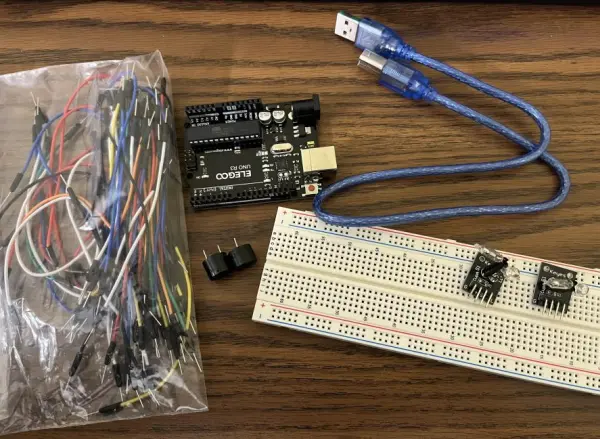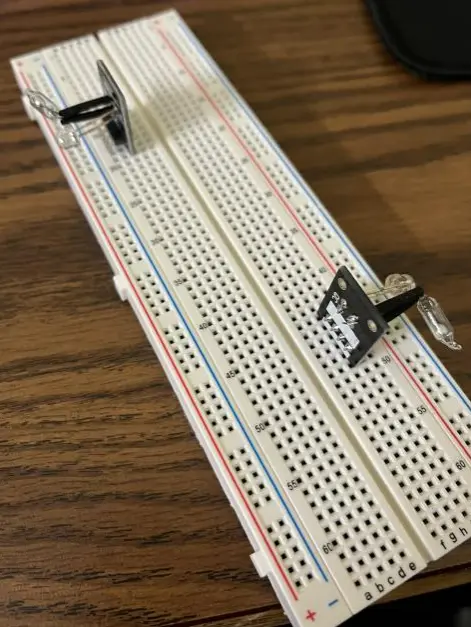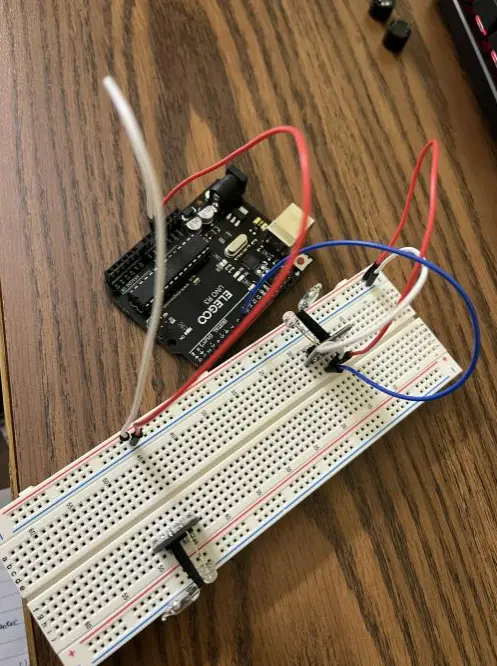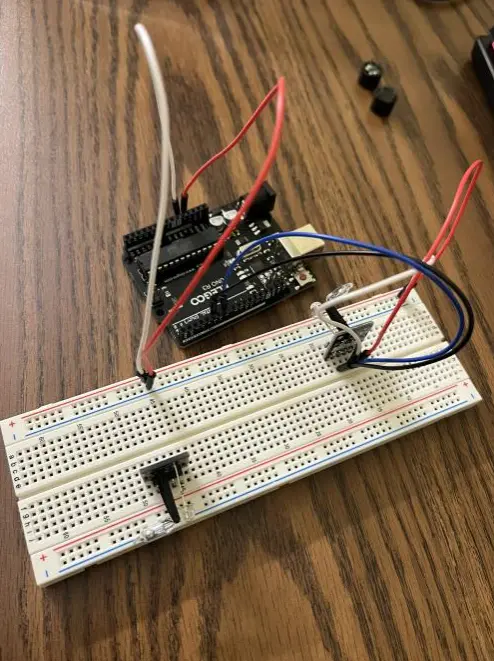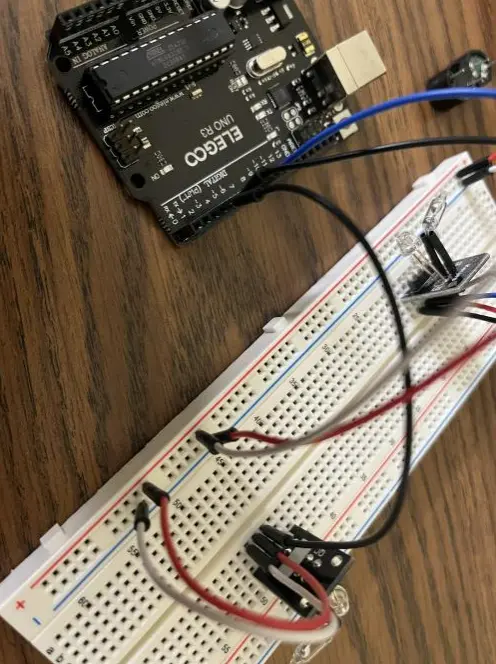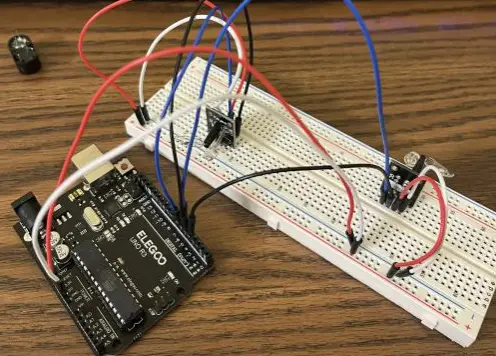Sensor Description
The KY-027 Magic Light Cup module consists of two boards, each equipped with an LED and a mercury tilt switch. By utilizing PWM to control the LEDs on both modules, you can simulate the visual effect of light “magically” transferring between them when they are tilted, reminiscent of pouring water between cups, which inspired its name.
Alternatively, this pair can function as a tilt sensor. I am considering creating an enjoyable game with it. The objective would be to tilt the board until the LED brightness reaches a level between two predefined values, or for a more challenging game, precisely matches a single number (adjustable via code) to stop a buzzer.
If determining the LED brightness directly from the Light Cup Module proves too challenging during gameplay, brightness readings will be available on the Serial Monitor.
Requirements
- Arduino UNO
- Breadboard Jumper Wire
- KY-027 Magic Light Cup Module
- Passive Buzzer
- Step 1: Plugin the Magic Light Cup Module pair
- Step 2: Connect GND Pin with GND rail & VCC Pin of Light Cup Module with 5V rail of Breadboard
- Step 3: Connect Signal Pin with Digital Pin-7 of Arduino Uno
- Step 4: Connect LED Pin of Light Cup Module with Digital Pin-5 of Arduino Uno
- Step 5: Repeat step 2 on the breadboard for the 2nd Light Cup Module
- Step 6: Connect Signal Pin with Digital Pin-4 of Arduino Uno
- Step 7: Connect LED Pin of Light Cup Module with Digital Pin-6 of Arduino Uno
Code: test with what we have so far
int ledPinA = 5;
int switchPinA = 7;
int switchStateA = 0;
int ledPinB = 6;
int switchPinB = 4;
int switchStateB = 0;
int brightness = 0;
void setup()
{
pinMode(ledPinA, OUTPUT);
pinMode(ledPinB, OUTPUT);
pinMode(switchPinA, INPUT);
pinMode(switchPinB, INPUT);
}
void loop()
{
switchStateA = digitalRead(switchPinA);
if (switchStateA == HIGH && brightness != 255)
{
brightness ++;
}
switchStateB = digitalRead(switchPinB);
if (switchStateB == HIGH && brightness != 0)
{
brightness –;
}
analogWrite(ledPinA, brightness); // A slow fade out
analogWrite(ledPinB, 255 – brightness); // B slow bright up
delay(20);
}
Step 8: Plug the passive buzzers in, connect the Buzzer (+) to Arduino Pin 2 and the Buzzer (-) to Arduino Pin GND
Step 9: When the brightness is not between 125 and 130, buzz
Code
int ledPinA = 5;
int switchPinA = 7;
int switchStateA = 0;
int ledPinB = 6;
int switchPinB = 4;
int switchStateB = 0;
int brightness = 0;
int buzzerPin = 2;
void setup()
{
Serial.begin (9600);
pinMode(ledPinA, OUTPUT);
pinMode(ledPinB, OUTPUT);
pinMode(switchPinA, INPUT);
pinMode(switchPinB, INPUT);
pinMode(buzzerPin, OUTPUT);
}
void loop()
{
if (brightness <= 125 || brightness >= 130) {
tone(buzzerPin, 100);
}
else {
noTone(buzzerPin);
}
switchStateA = digitalRead(switchPinA);
if (switchStateA == HIGH && brightness != 255)
{
brightness ++;
}
switchStateB = digitalRead(switchPinB);
if (switchStateB == HIGH && brightness != 0)
{
brightness –;
}
Serial.println(brightness);
analogWrite(ledPinA, brightness); // A slow fade out
analogWrite(ledPinB, 255 – brightness); // B slow bright up
delay(20);
}
Follow this link for complete project: Random Sensor Project KY-027 Magic Light Cup Module

